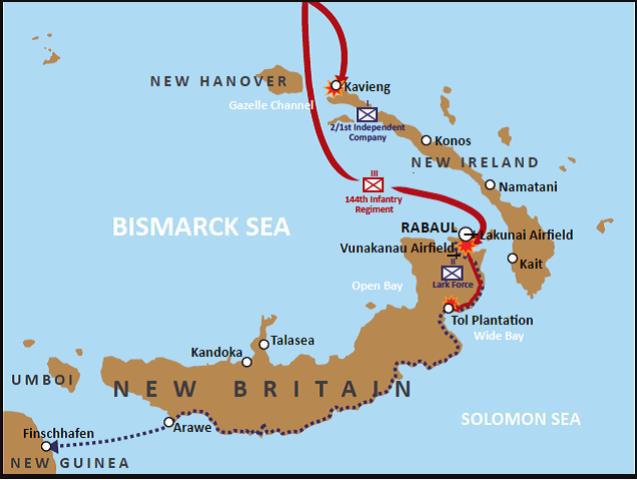Inspired by my earlier thread about successfully defending the Philippines, which can be found here.
With a POD in January 1941 how could Australia successfully defend the city of Rabaul and by extension New Britain island from the Japanese in 1942. Since it had an excellent harbour & two airfields at Lakunai & Vaunakanau, which were able to threaten the Japanese Caroline islands.

In the OTL a small garrison was sent in March 1941 consisting of an AIF Infantry Battalion, a local Militia unit, a New Guinea Volunteer Rifle, coastal defence battery, an anti tank battery & Field Ambulance. While the RAAF contingent included 10 CAC Wirraways (Texans in camouflage) & 4 Hudson light bombers.
There were apparently plans to construct a radar station & a defensive minefield, but neither option was exercised. While the cupboard is fairly bare in regards to available assets, but I thought that perhaps 21 or 453 Squadron could be detached from Malaya to New Britain. While I don't know about the possibility of obtaining a radar set or even deploying the 2/1st Independent Light Tank Squadron (originally slated to go to Malaya to New Britain).
Anyway, is there anything the ADF can do to ensure that New Britain remains in Allied hands or the campaign takes far longer then a single month.
With a POD in January 1941 how could Australia successfully defend the city of Rabaul and by extension New Britain island from the Japanese in 1942. Since it had an excellent harbour & two airfields at Lakunai & Vaunakanau, which were able to threaten the Japanese Caroline islands.

In the OTL a small garrison was sent in March 1941 consisting of an AIF Infantry Battalion, a local Militia unit, a New Guinea Volunteer Rifle, coastal defence battery, an anti tank battery & Field Ambulance. While the RAAF contingent included 10 CAC Wirraways (Texans in camouflage) & 4 Hudson light bombers.
There were apparently plans to construct a radar station & a defensive minefield, but neither option was exercised. While the cupboard is fairly bare in regards to available assets, but I thought that perhaps 21 or 453 Squadron could be detached from Malaya to New Britain. While I don't know about the possibility of obtaining a radar set or even deploying the 2/1st Independent Light Tank Squadron (originally slated to go to Malaya to New Britain).
Anyway, is there anything the ADF can do to ensure that New Britain remains in Allied hands or the campaign takes far longer then a single month.